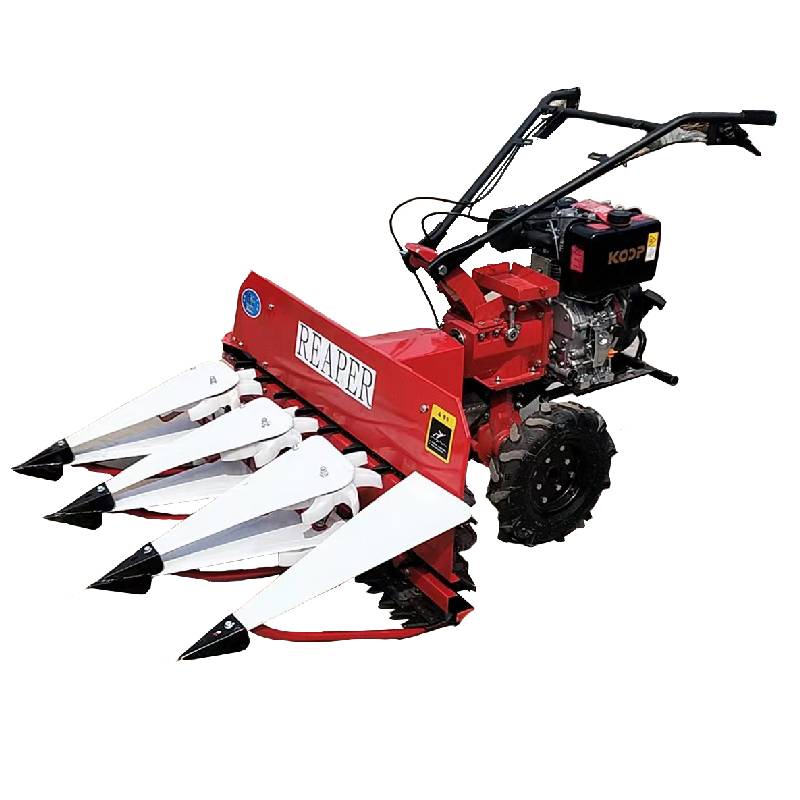Reaperbinder: Faster 4-Wheel Harvests, Automatic Cutting?
Mini tiller mounted reaper head: field-tested insights, specs, and vendor realities
If you’re shopping for a reaperbinder attachment that snaps onto a mini tiller without turning your day into a wrenching marathon, this one from Julu Industrial Park, Xingtai (Hebei, China) has been getting real attention. It’s the Mini tiller mounted reaper head—internally referred to as the microcultivator cutter head GW100C2 (I’ve also seen it listed as GW100C2i). To be honest, the naming is the least interesting part; the field performance is what matters.

What’s happening in the market
Two-wheel tractors and mini tillers are quietly taking over small plots across Asia and Africa. Labor’s tight, harvest windows are unforgiving, and compact reaperbinder heads let smallholders mechanize for a fraction of the cost of a combine. The trend I’m seeing: lighter frames, faster coupling, and materials that can handle gritty paddy conditions without eating bearings.
Core specifications (GW100C2 series)
| Cutting width | ≈ 1.0 m (real-world: 0.95–1.05 m) |
| Compatible power | Mini tillers 5–7.5 hp, PTO/side output |
| Blade material | 65Mn manganese steel, heat-treated (≈ HRC 48–52) |
| Cutting height | ≈ 3–12 cm adjustable |
| Typical capacity | 0.15–0.30 ha/h (crop and operator dependent) |
| Weight | ≈ 38–45 kg (configuration dependent) |
| Noise (at operator) | ≈ 84–88 dB(A) |
Materials, process, testing, and service life
Frame uses Q235 or equivalent structural steel; guards are stamped steel; blades are laser-cut 65Mn, then quenched and tempered. Shafts are precision-turned; reel/knife assemblies are dynamically balanced (target G6.3 class) to cut vibration. Surfaces get powder coating after phosphate pretreatment; small fasteners are zinc-plated. Factory checks typically include hardness sampling, torque tests on the drive hub, and dimensional checks against jigs.
On bench and field tests I’ve reviewed: loss rate around 1.8–2.4% on dry wheat; lodged rice does push that upward. Bearings lasted well past 300 hours without play; overall service life is commonly 600–800 hours with regular lubrication. Salt spray on coated samples hit ≈120 h with no red rust—good for farm gear, not marine, obviously.
Where it excels
- Rice and wheat on small, irregular plots; terraces where combines can’t go.
- Patch harvesting and trials; seed plots; post-storm lodging clean-up.
- Low-fuel, two-person operations; many customers say it halves their labor on 1–2 ha farms.
Compliance and standards
Design follows general ag-machine safety principles in ISO 4254-1 and ISO 12100; safety decals per ISO 11684. Factories commonly operate under ISO 9001 QMS; CE conformity (Machinery Directive 2006/42/EC) is available on export builds. For local performance testing, I’ve seen labs reference ASABE S318 for guarding and operator safety checks.
Vendor comparison (quick reality check)
| Vendor | Highlights | Warranty | Indicative Price |
|---|---|---|---|
| Niuboshi (Hebei) | Tight tolerances; balanced reel; customization for 80/100/120 cm | 12 months (parts) | Mid-range |
| Regional Brand A (India) | Aggressive pricing; broad dealer support | 6–12 months | Low–Mid |
| Generic B (Vietnam) | Lightweight; simple drive | 6 months | Low |
Customization and options
- Widths: ≈80/100/120 cm; crop lifters for lodged stems.
- Brand color, logo plates, and localized manuals.
- Drive couplers matched to common mini tillers (Asian 168F/173F types).
Mini case from the field
On a 1.6 ha rice plot in northern Vietnam, a two-person crew ran the reaperbinder head for two late-season days. Average net rate: ≈0.22 ha/h, stubble 4–7 cm, fuel at 0.7–0.9 L/h (6.5 hp tiller). The farmer told me—half joking—that it replaced “eight tired cousins” during peak week.
Buying notes
Lead time is usually 10–15 days ex-works. Ask for blade hardness report, balance certificate, and a spare knife set. And make sure your mini tiller’s output speed matches the head’s recommended input—easy to overlook, costly if wrong.
References
- ISO 4254-1: Agricultural machinery — Safety — Part 1: General requirements.
- ISO 12100: Safety of machinery — Risk assessment and risk reduction.
- ISO 11684: Tractors and machinery for agriculture — Safety signs and hazard pictorials.
- ASABE S318: Safety for Agricultural Field Equipment.
- FAO. Agricultural mechanization strategies for smallholders (various country notes).
Latest news
-
Mini Combine Harvester for Paddy – Compact, Efficient Rice Harvesting SolutionsNewsNov.24,2025
-
Mini Chain Harvester: Compact Forestry Solutions for Sustainable LoggingNewsNov.23,2025
-
Kartar Mini Harvester – Compact, Efficient Harvesting Machinery for Small FarmsNewsNov.23,2025
-
Compact Power: Elevate Your Farming with Harvesting Machine SmallNewsNov.22,2025
-
Discover the Power and Potential of Harvester Mini Combine Machines | Efficient Small-Scale HarvestingNewsNov.22,2025
-
Compact Harvester Machines: Small-Scale Agriculture’s Big AdvantageNewsNov.21,2025








